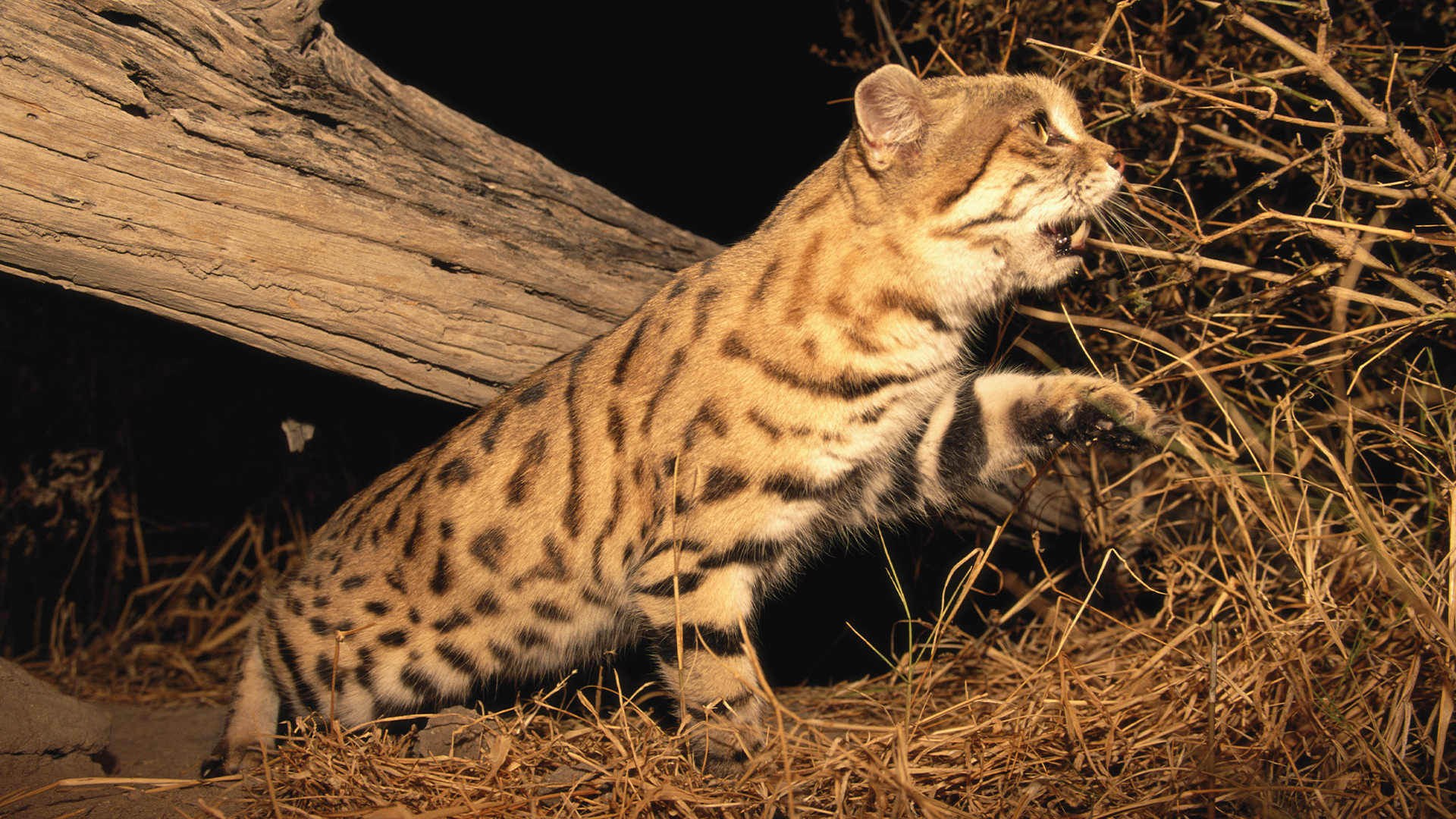Adorable but deadly little wildcat may be inbreeding at 'alarming' rates, study finds
Black footed cats are already a threatened species, and habitat fragmentation is now causing increased rates of interbreeding, placing them at higher risk of disease.

A tiny but deadly species of cat appears to be inbreeding at an "alarming" rate, putting the threatened feline at a heightened risk of a rare, deadly disease, scientists have discovered.
Black-footed cats (Felis nigripes) are the smallest species of felid in Africa, standing at just 8 inches (20 centimeters) tall and weighing 2 to 6 pounds (1 to 3 kilograms). Adapted to a nocturnal life in the desert, they sport big eyes and ears and are considered the deadliest cats on Earth in terms of kill rate.
Due to increasing habitat loss as well as persecution by farmers that mistake them for jackals, these cats are at a high risk of endangerment. They are listed as vulnerable on the International Union for Conservation of Nature Red List of Threatened Species.
A new study, published on Jan. 2 in the journal PNAS, suggests that black-footed cats may now be suffering from genetic isolation and inbreeding.
The researchers sequenced the genome of 10 black-footed cats and combined them with previously public genomic data. Their analysis showed markers of recent inbreeding events, which may have increased as a result of habitat fragmentation.
Projects such as roads or farms can fracture an animal's natural habitat, splitting up communities of potential breeding partners.
Related: Clouded leopard: The cat with saber-like teeth that can walk upside down in trees
Sign up for the Live Science daily newsletter now
Get the world’s most fascinating discoveries delivered straight to your inbox.
The scientists linked this higher level of inbreeding to a heightened chance of developing amyloidosis, a rare disease that causes the mortality of about 70% of the captive black-footed cat population.
Amyloidosis causes a protein build-up in organs, like the kidneys, which can be fatal. In an interview with Live Science, Nadine Lamberski, the chief conservationist at San Diego Zoo Wildlife Alliance, who was not involved in the study, said she has witnessed many such deaths while studying black-footed cats in captivity.
Inflammation could not only lead to kidney failure but also an inflammation of the cats' auditory canals, she said. The bony structures of the black-footed cats' inner ears take up 25% of their skull, making them particularly sensitive to such inflammation.
The researchers looked at gene variants previously associated with the development of amyloidosis in black-footed cats. They identified two potentially harmful gene variants that cause a loss or alteration of normal gene function.

Inbreeding may increase the prevalence of these mutations, the researchers suggest, as it increases the chances that offspring inherits the same gene variant from both parents, because genetic diversity in the population is overall lower. Many harmful mutations are also recessive, meaning that they would only be expressed if both parents carried it. Such risk is increased if the parents are related.
The researchers wrote that they had uncovered "alarming levels of inbreeding" among black-footed cats, and that this appears to have happened recently as a result of "severe genetic isolation" from habitat fragmentation.
Lamberski said she has not come across the issue of inbreeding in her own work, adding the size of the sample in the study may not have had enough diversity to give a clear picture.
However, she added that inbreeding and the lack of genetic diversity may have become a more prominent risk over time. "Cat population numbers have declined dramatically, so you would have to think that genetic diversity has also declined as a result," she said.
The study highlights that more needs to be done to study the conservation risks of small felines, she said.
"There are very few publications on small cats," she said, "Cheetahs, lions and tigers tend to get the large amount of research dollars but small carnivores also have unique roles they play in the ecosystem."
Editor's note: Nadine Lamberski's affiliation has been corrected.

Jacklin Kwan is a freelance journalist based in the United Kingdom who primarily covers science and technology stories. She graduated with a master's degree in physics from the University of Manchester, and received a Gold-Standard NCTJ diploma in Multimedia Journalism in 2021. Jacklin has written for Wired UK, Current Affairs and Science for the People.










